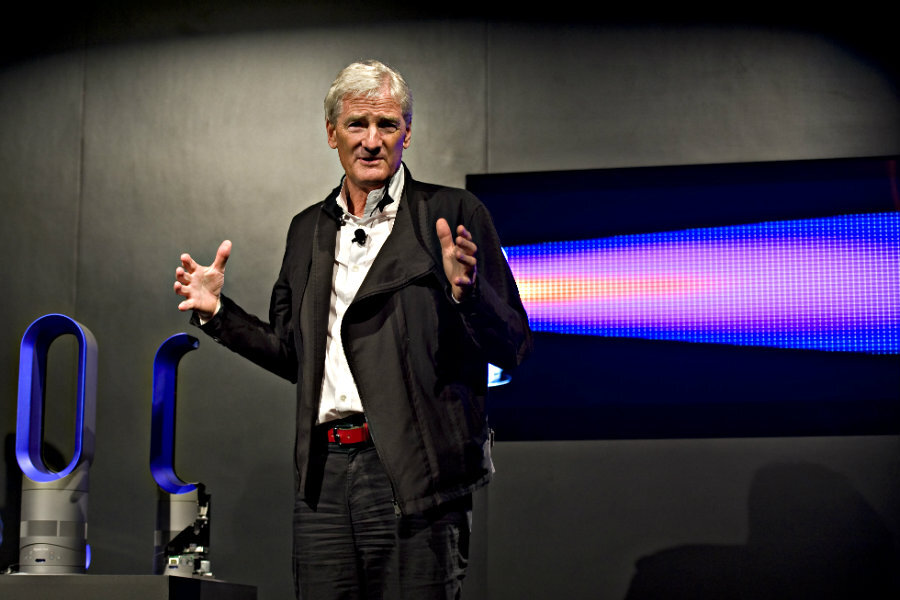Dyson wants to change the way you dry your hair – for $400
The Dyson company has released its latest invention, the Supersonic hairdryer, a tool that could dramatically change the routines of people around the world.
For most, the word innovation doesn't call to mind images of daily life. Household appliances come and go without fanfare. But for Sir James Dyson, the inventor behind the Dyson company, the more common the appliance, the more important it is to innovate.
"Millions of people use contraptions daily that are hideously inefficient, waste their time and are causing them long-term damage," Dyson told The New York Times. "We realized that we could – and should – sort this situation out."
Dyson began to sort the situation out 30 years ago, when his first major consumer driven invention, the Dyson vacuum, hit stores.
Since that time, Dyson's popularity has been boosted by a legion of household electronics. Most recently, the company's efficient and powerful air hand-dryers have slowly made their way into bathrooms at airports and restaurants, fast food chains, and public restrooms.
According to Dyson, the new Supersonic hairdryer was a massive undertaking simply because hairdryers are an important element in the daily routines of people worldwide.
The New York Times reports that 75.5 percent of American women and 97 percent of Japanese women (with correspondingly smaller proportions of men in each country) use a hairdryer on a daily basis.
But what was wrong with ordinary commercial hairdryers?
Nothing has changed in the hairdryer market for 60 years, Dyson says. That leaves consumers using clunky handheld machines that add 20 minutes, on average, to users' morning or evening routines.
Dyson and a team of 103 engineers identified three main problems with conventional hair dryers: Normal hair dryers are too loud, too heavy, and take too long.
After four years and $200 million invested in the project, Dyson is ready to unveil the Supersonic.
"The first thing you notice is very light and very slim and very nicely balanced," Dyson told CBS News. "The second thing you'll notice when you when you switch it on, and I've just switched it on, is that it's very quiet, so I can carry on talking to you while I'm doing my hair."
Dyson spared no expense in its search for the perfect hairdryer, creating around 600 prototypes and filing about 100 patents in order to find that perfect balance that Dyson describes.
In order to achieve its design goals, Dyson invented a new motor, which is placed in the handle of the hair dryer for ease of use, a revolutionary step in hair dryer tech.
The new Supersonic weighs just 370 grams (13 ounces), and with its silencer and tiny motor, is quiet enough to satisfy Dyson.
Engineers and designers say that the difficulty in creating such a personal piece of technology is that men and women use hair dryers differently around the world.
"Trust me when I say there are many more approaches and angles to blow-drying than vacuuming in the world. British women want volume," said Supersonic design manager Ed Shelton to The New York Times. "Japanese women want straightness. No one wants hair damage. And we then we had to create a fleet of robots specifically to test that over and over again."
And test it they did, on more than 1,000 miles of human hair.
The revolutionary new design was unveiled in Tokyo today, where Dyson says customers are particularly enthusiastic about new technology. Dyson grew his hair specifically for the launch, and says that the Supersonic could be just the beginning of his company's migration into a more glamorous market than vacuum cleaners and hand-dryers.
The Supersonic will retail for about $400 when it comes to America this September. Who ever said that beauty came cheap?






